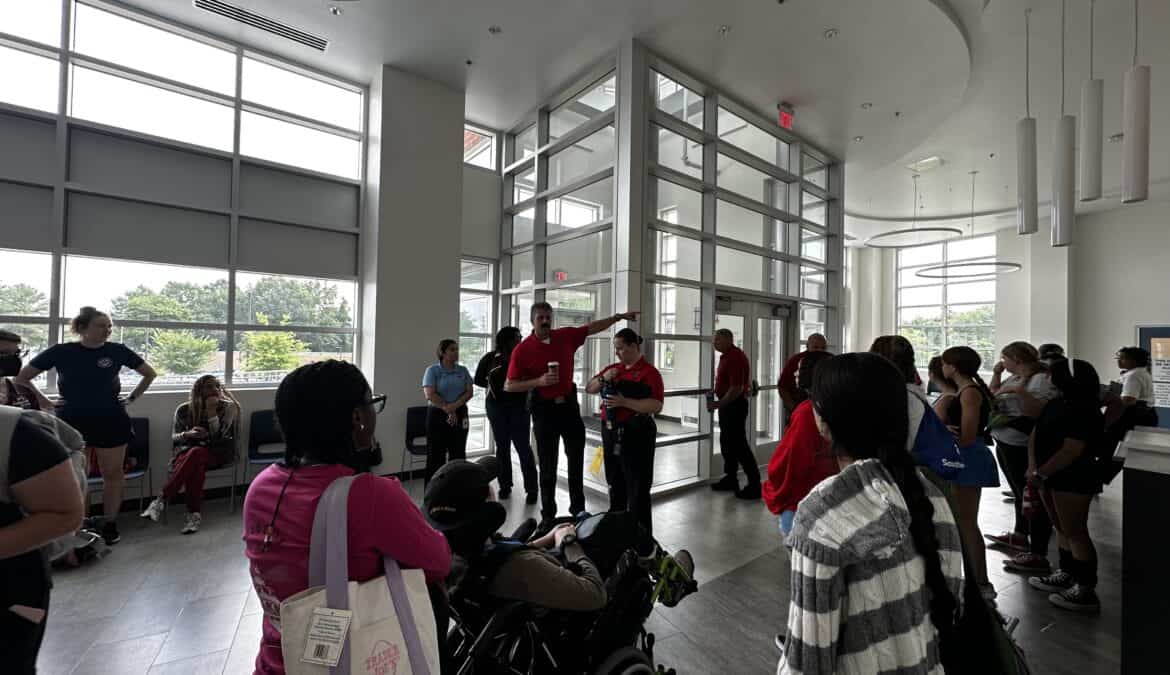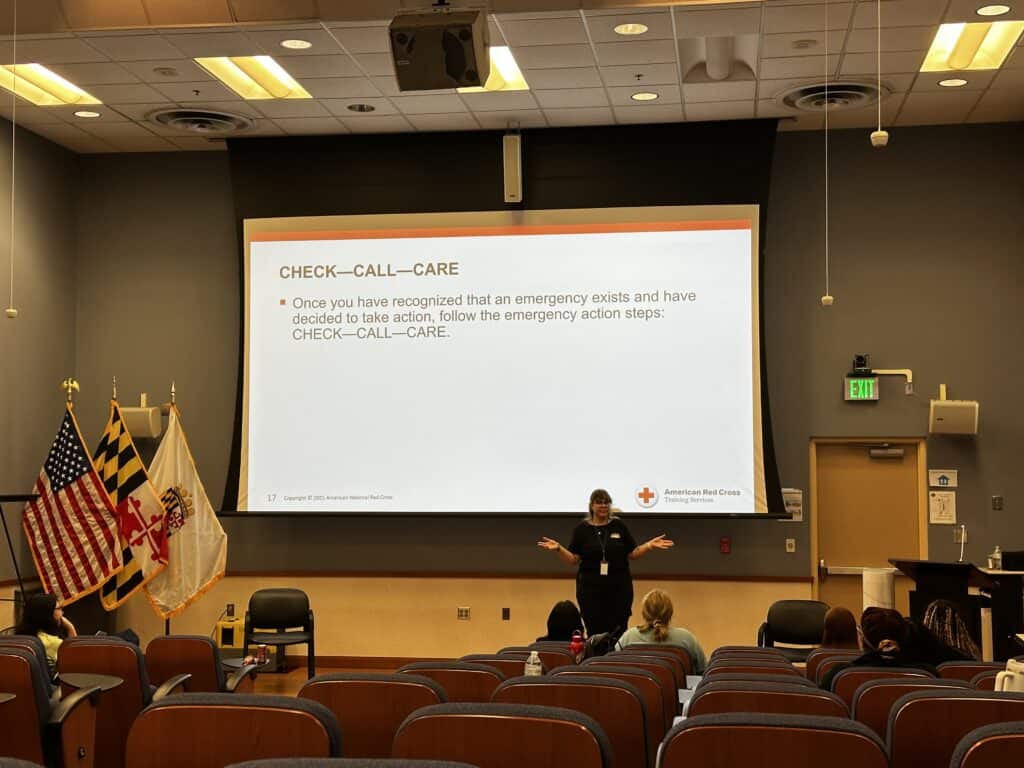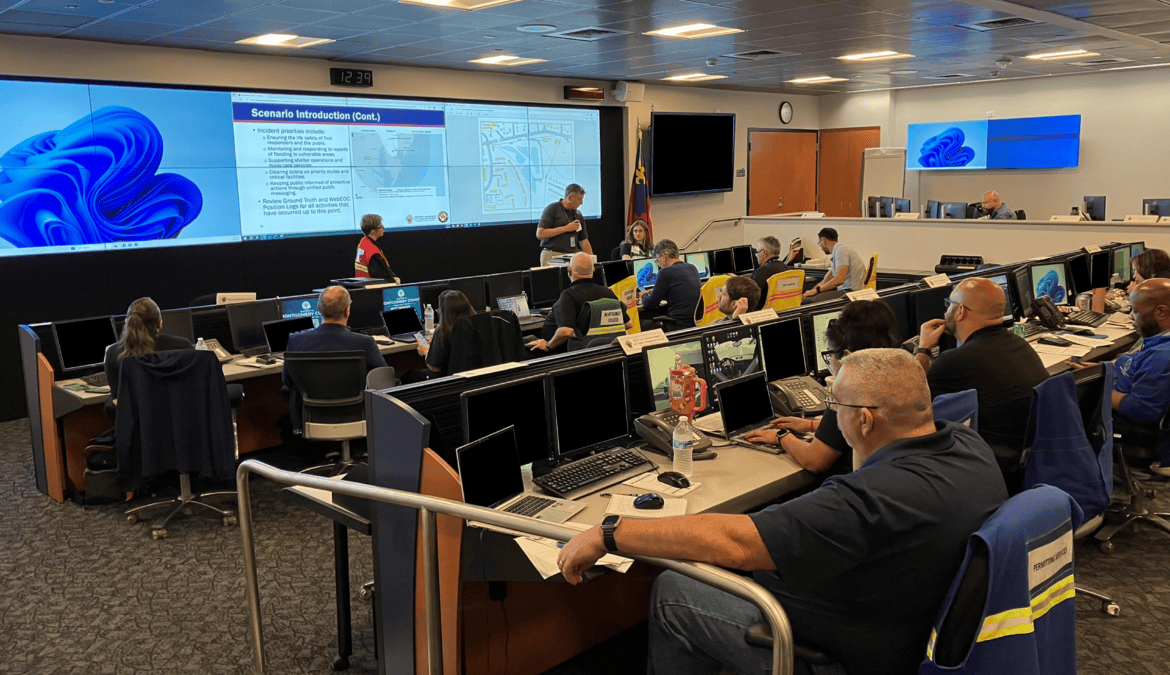In Fiscal Year (FY) 2022, encompassing the period from June 1, 2023, to May 31, 2024, the Maryland-National Capital Region Emergency Response System (MDERS) played a vital role in strengthening stakeholder response capabilities. Through targeted policy and planning initiatives, systematic development and delivery of training and exercise programs, and strategic equipment acquisition, MDERS provided critical support to partner agencies, empowering them to improve their operational capabilities. Throughout FY22, MDERS, in collaboration with partners, focused their programmatic efforts on 10 different capabilities, which include:
- Command Competency Lab Enhancement
- Emergency Management Response and Recovery Professional Services
- Emerging Homeland Security Technology Pilot
- Incident Command Simulation
- Law Enforcement Tactical Equipment and Specialized Vehicle Enhancements
- Public Access Bleeding Control
- Public Health Emergency Response
- Small Unmanned Aerial Systems (sUAS)
- Soft Target Protection
- Training and Exercise Program
Command Competency Lab Enhancement
The Command Competency Lab Enhancement project continued to modernize the Prince George’s County Fire Department’s (PGFD) command-level officer training program. By integrating state-of-the-art three-dimensional (3D) and virtual reality (VR) technologies, these enhancements create an immersive and lifelike training simulation environment. This initiative, supported by upgraded information technology (IT) infrastructure and equipment, enables incident personnel to practice decision-making, strategic coordination, and communication skills in controlled scenarios. These enhancements have focused on upgrading both hardware and software to support the development of the Mobile Immersive Simulation Environment (MISE) end-state solution. As part of the end-state solution for this project, two additional portable 3D display systems were purchased to complement the system purchased in FY21.
Emergency Management Response and Recovery Professional Services
MDERS supported the critical missions and strategic goals of the Montgomery County Office of Emergency Management and Homeland Security (MC OEMHS) and Prince George’s County Office of Homeland Security and Emergency Management (PG OHS/EM) by funding a range of professional services and equipment.
In Montgomery County, MDERS funding supported staffing to help critical operations and training and exercise events to bolster community preparedness in the Volunteers and Donations Management Program and Training and Exercise Program. MDERS funds were also utilized to provide cardiopulmonary resuscitation (CPR) training equipment, such as CPR manikins, to the Montgomery County Community Emergency Response Team (CERT) and to purchase six mobile public safety radios for emergency management response vehicles.
In Prince George’s County, MDERS allocated funding to bolster PG OHS/EM’s response and recovery capabilities through the execution of planning initiatives and conducting specialized training programs with staff who support the Emergency Management Response and Recovery Planning and Training Programs, as well as the Volunteers and Donations Management Program.
Emerging Homeland Security Technology Pilot
MDERS established the Emerging Homeland Security Pilot Program, known as the “Innovation Fund,” to support stakeholder agencies in addressing emergency response challenges through the evaluation and implementation of innovative technologies. The Innovation Fund enables agencies to apply for funding to procure, test, and assess novel technologies, allowing for informed decisions about further investments and operational integration. By piloting certain technologies, agencies gain valuable insights into their effectiveness and applicability before fully adopting the equipment. In FY22, the specific technology acquired through the Innovation Fund includes the following:
- Shot Box Firearm and Improvised Explosive Device (IED)Simulator allows PGPD and MCPD to replicate realistic noises and introduce these stress factors into training scenarios.
- SiOnyx Aurora Pro Night Vision Monoculars are a handheld device that increases user visibility in nighttime or low-light settings for PGPD officers.
- E-COTI Thermal Monocular Clip-ons are attachable thermal devices that connect to helmets, allowing MCPD operators to harness advanced thermal imaging for effective maneuvering in low visibility conditions.
- Active Threat Response Kits are ballistic backpacks that contain vital equipment for PGPD officers, such as pry tools, door stops, and a rigid tourniquet carrier.
- Infrared (IR) Strobe Devices are strobe beacons that attach to PGPD officers’ uniforms and emit a light that can help identify law enforcement personnel in crowded or low-light environments.
- Q-Collar Q30 Collars are devices worn on the back of the neck by MCPD and PGPD officers to help minimize brain movement during impacts to the head area.
- Blast Analytics and Mitigation sensors are wearable devices that attach to PGPD officers, capturing data that may identify symptoms and factors associated with traumatic brain injury.
Incident Command Simulation
In FY22, MDERS supported additional enhancements to the Incident Command Simulation project. This funding enabled the integration of software into the MISE end-state hardware solution for PGFD, which was funded through the Command Lab Enhancements. The additional improvements build upon the collaboration with the Uniformed Services University Val G. Hemming Simulation Center (the Simcenter). The partnership led to the development of an advanced virtual reality simulation system to bolster incident command training for MCFRS and PGFD. During FY21, the Simcenter achieved a significant milestone by creating its inaugural immersive virtual reality simulation for integration into the MISE immersive mobile 3D training environment.
Law Enforcement Tactical Equipment and Specialized Vehicle Enhancements (MCPD)
In FY22, the MCPD response and deployment van (acquired in FY21) underwent upfitting for improved storage. MCPD also received a special operations logistics van to boost mobility, on-scene sustainment, and overall operational readiness for complex scenarios. To reduce officer vulnerability during high-risk operations, rifle-rated shields, thermal augmentation devices (TADs), and gas-mask voice emitters were procured. Training and breaching capabilities were expanded with the acquisition of breaching frames and breaching tools to promote realistic, repeatable practice of entry tactics. Additional equipment, such as the Mantis X3 Shooting Performance System with a Blackbeard Trigger System and training simunitions were procured to further improve marksmanship and safety during training.
Law Enforcement Tactical Equipment and Specialized Vehicle Enhancements (PGPD)
MDERS supported PGPD with several key acquisitions and upgrades designed to strengthen emergency response and communication capabilities. A central enhancement was the addition of a Mesh network system to PGPD’s mobile command bus, providing scalable, reliable Wi-Fi coverage that supports real-time surveillance, drone and body camera feeds, and database access during large-scale incidents. MDERS funded a self-contained breathing apparatus (SCBA) trailer to support chemical, biological, radiological, nuclear, and explosive (CBRNE) responses and rescue operations. PGPD also received a Tactical Emergency Medical Services (TEMS) extraction vehicle and a new deployment van. Another significant investment was the comprehensive refurbishment of one of PGPD’s BearCat armored vehicle, which extended the BearCat’s lifespan and operational value at a fraction of the cost of a new vehicle.
Public Access Bleeding Control
The Public Access Bleeding Control program, more commonly referred to as the Public Access Trauma Care (PATC) program, was developed by MDERS to equip civilians in Montgomery and Prince George’s Counties with the essential knowledge and tools to manage life-threatening bleeding emergencies. Through the deployment of over 1,000 bleeding control kits across public spaces, the program enhances community preparedness and increases survivability during emergencies. In FY22, MDERS grew the program by providing training caches to the Prince George’s County Public Schools System (PGCPS) and procuring additional foam rollers for tourniquet application training in both PGCPS and Montgomery County Public Schools (MCPS).
Public Health Emergency Response
MDERS allocated funds to support the full-time staffing of a Medical Reserve Corps (MRC) coordinator for the Montgomery County Department of Health and Human Services (DHHS) and Prince George’s County Health Department (PGHD). The MRC Coordinator oversaw the deployment of volunteer medical professionals to various public health events in both jurisdictions. In Montgomery County, over 961 volunteer deployments contributed more than 3,100 hours to activities such as COVID-19 and flu vaccination clinics, training, and community outreach. Similarly, in Prince George’s County, over 93 volunteers completed organizational training and engaged in more than 646 hours of public health emergency operations, including inventorying and organizing COVID-19 testing equipment, conducting vaccination clinics, and participating in outreach efforts. Volunteers in both counties were trained in life-saving skills, supported disaster assistance centers, and participated in educational initiatives to bolster community resilience.
Small Unmanned Aerial Systems (sUAS)
MDERS supported the implementation and expansion of the Drone as a First Responder (DFR) program using small unmanned aerial systems (sUAS) in Montgomery County. This initiative equipped first responders with real-time aerial insights, enhancing situational awareness, supporting responder safety, and facilitating rapid decision-making across various scenarios. The DFR program was supported by key equipment acquisitions, including a Plum Case, a rugged and portable communications device designed to enhance internet connectivity for sUAS operations, ensuring continued communication with incident command. In Prince George’s County, MDERS procured six perpetual licenses of DJI’s Terra Pro software, a 3D modeling software primarily used for drone mapping and surveying crime scenes and collision sites. Additional accessories such as a portable power station and two GL10 Gimball Spotlights were procured to support sUAS operations in Prince George’s County.
Soft Target Protection
In FY22, the Montgomery County Police Department (MCPD) identified the need to increase response effort to threats on soft targets. Soft target protection involves implementing security measures and strategies designed to safeguard locations or individuals that are particularly vulnerable to attacks and are not typically fortified or heavily secured. Such locations often include public spaces or facilities where large numbers of people gather, including shopping malls, schools, transportation hubs, and places of worship. The primary goal of soft target protection is to enhance safety and security in these environments, thereby preventing the impact of potential threats and attacks. As the primary agency responsible for the safety of individuals within Montgomery County, MCPD’s role in protecting soft targets is crucial. To further bolster their ability to respond to and manage threats in these vulnerable areas, MDERS supported the procurement of 40 vehicle barriers and 10 camera systems to reduce risks and enhance security measures.
Training and Exercise Program
The Training and Exercise program provides a wide range of opportunities for stakeholders to enhance their skills and capabilities through in-person, virtual, and hybrid curricula. This program encompasses highly specialized tactical trainings as well as policy-level and leadership development to address the diverse learning needs and operational priorities of stakeholders. Key training and exercises include:
- Active Assailant Response Exercise Series – Public School Integration (Prince George’s County)
- Aerial Platform Training
- American Meteorological Society Annual Meeting
- Assessment and Training Solutions Consulting Corporation (ATSCC) Tactical Emergency Casualty Care (TECC) – Live Tissues Class
- Association of Healthcare Emergency Preparedness Professionals (AHEPP) Conference
- Basic/Intermediate Explosive Breacher Course
- Center for Homeland Defense and Security (CHDS) Annual Alumni Professional Exchange
- Counter Narcotics and Terrorism Operational Medical Support (CONTOMS) EMT – Advanced Tactical Course
- Direct Action Resource Center (DARC) Advanced Sniper Course
- Federal Bureau of Investigation (FBI) Executive Leadership Institute (ELI)
- Fire Department Instructors Conference (FDIC) International
- Firehouse Expo
- Forced Entry Tactical Training (FETT) Breaching Circle
- FETT Master Tactical Breacher
- FETT Manual, Mechanical, Ballistic, Thermal, and Hydraulic (MMBTH) Breacher Course
- Governors Hurricane Conference
- Government Social Media Conference
- 2024 Institute of Electrical and Electronic Engineers (IEEE) Public Safety Technology Forum
- Invictus K-9 Tracking and Trailing Course
- Maryland Emergency Management Association (MDEMA) Annual Symposium
- Maryland-National Capital Region Emergency Response System (MDERS) Annual Symposium
- Medical First Receiver Operations Training
- MedStar Montgomery Medical Center Active Assailant Tabletop Exercise
- Montgomery County Police Tabletop Exercise Series
- Mobile Integrated Health Clinical Leadership Summit
- National Association of County and City Health Officials (NACCHO) Preparedness Summit
- National Association of Emergency Medical Services Physicians (NAEMSP) Annual Conference
- National Healthcare Coalition Preparedness Conference (NHCPC)
- National Tactical Officers Association (NTOA) Crisis Negotiations Conference
- Northwestern University School of Police Staff and Command (SPSC)
- HazMatIQ PropaneIQ Training Course
- MC OEMHS Climate Workshop
- MC OEMHS School Preparedness Summit
- Structural Collapse Specialist Course
- Special Operations Medical Association (SOMA) Scientific Assembly Conference
- Tomahawk Close Quarters Clearance (CQC) Methodical Clearance Baseline Course
- Yale-New Haven First Receivers Operations Training
With guidance from its Steering Committee and collaboration with multidisciplinary stakeholders, MDERS continues to reinforce its standards for regional preparedness and resilience, ensuring exceptional service for nearly two million residents of Montgomery County and Prince George’s County. By fostering seamless integration, driving innovation, and providing strategic support, MDERS remains deeply committed to its vision of building stronger, safer, and more unified communities, prepared to meet the evolving challenges of tomorrow. For more information, including a detailed synopsis and budgetary breakdown of these programs, this report is available at www.mders.org.
Written by Katie Dwyer
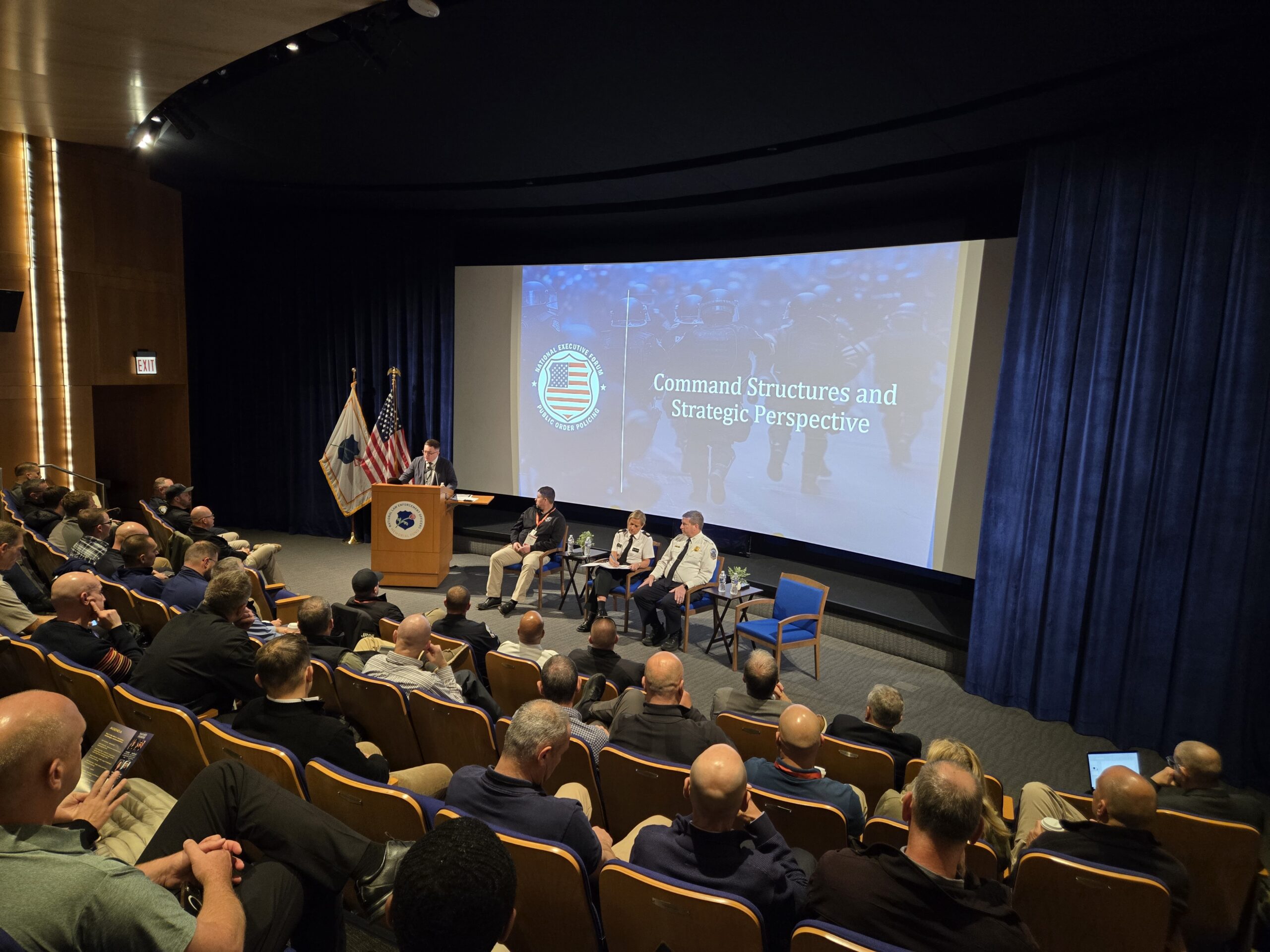 Public order policing is defined as “the policing of protestors, campaigners and other large gatherings of people, at events that may be either planned or spontaneous in nature” (Wakefield & Fleming, 2009). The intricate and fast-evolving nature of this field requires continued refinement and training for law enforcement to hone their skills. The layers of challenges these events pose were the impetus for this engaging event, which informed attendees about the appropriate standards in public order policing.
Public order policing is defined as “the policing of protestors, campaigners and other large gatherings of people, at events that may be either planned or spontaneous in nature” (Wakefield & Fleming, 2009). The intricate and fast-evolving nature of this field requires continued refinement and training for law enforcement to hone their skills. The layers of challenges these events pose were the impetus for this engaging event, which informed attendees about the appropriate standards in public order policing.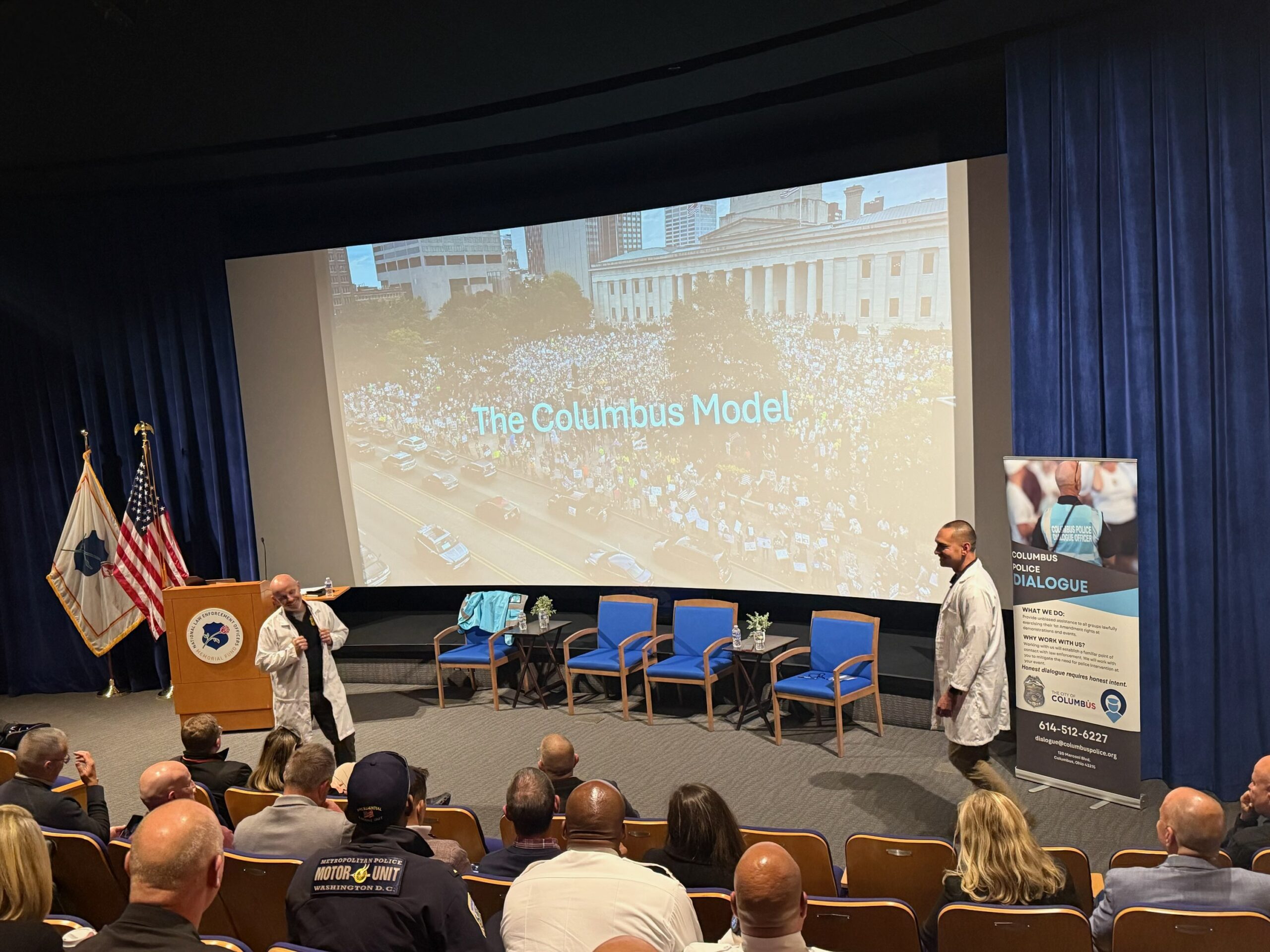
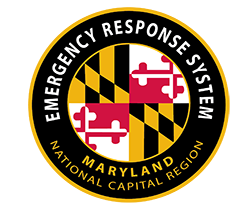

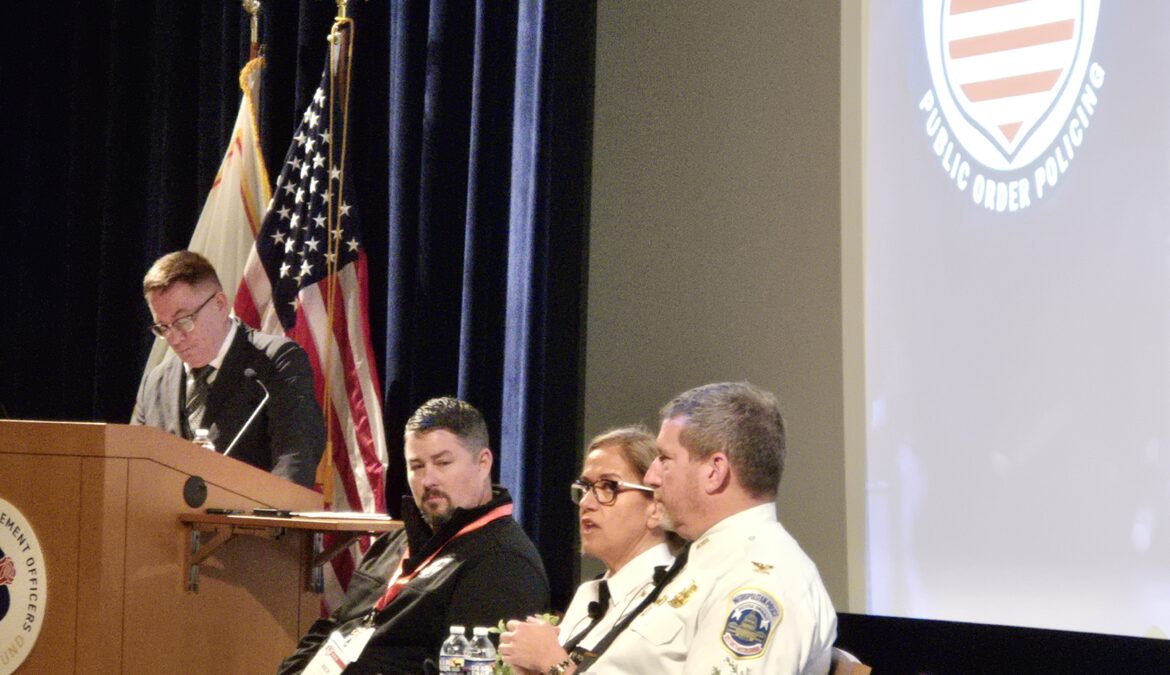
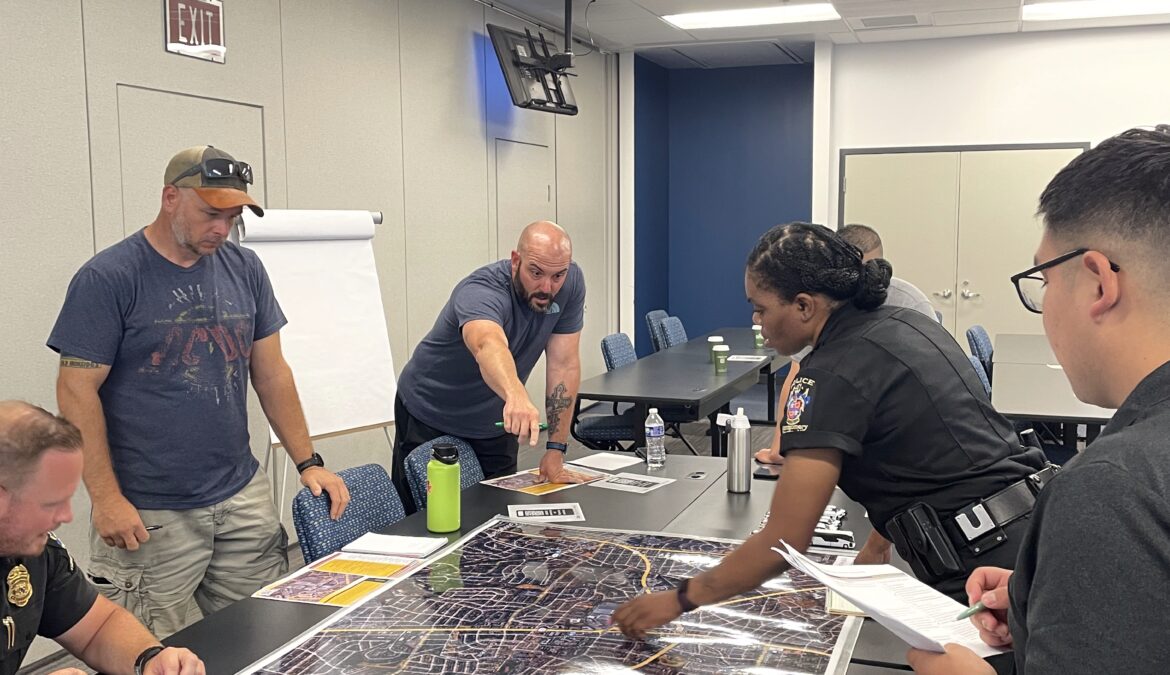

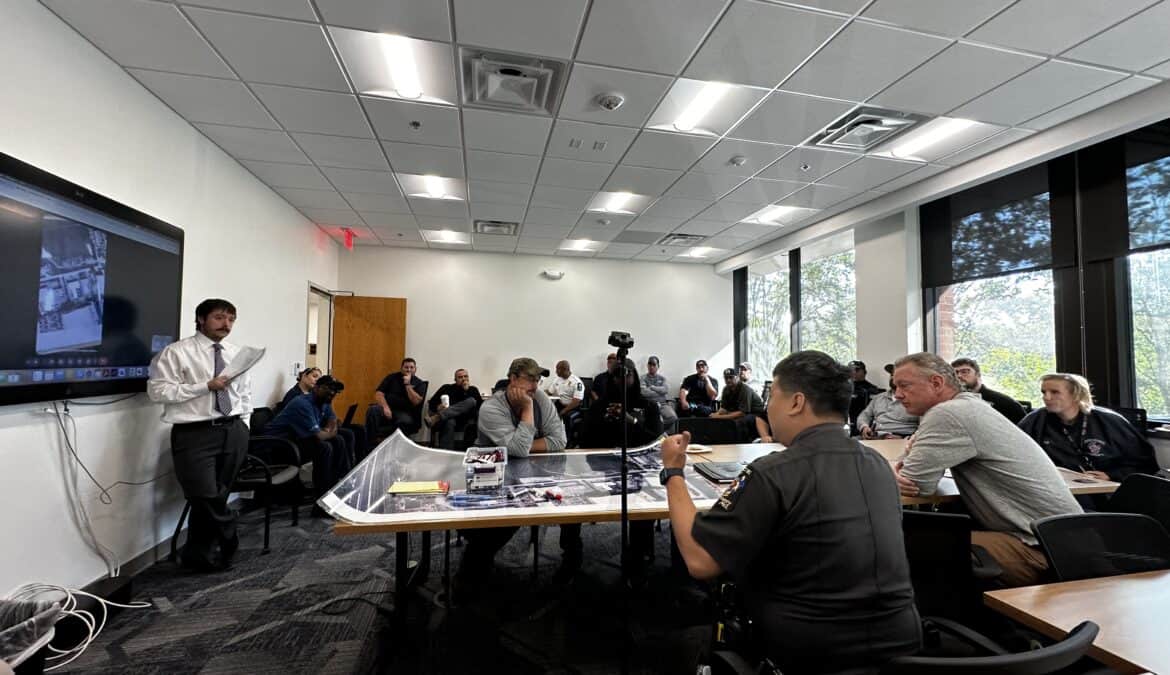
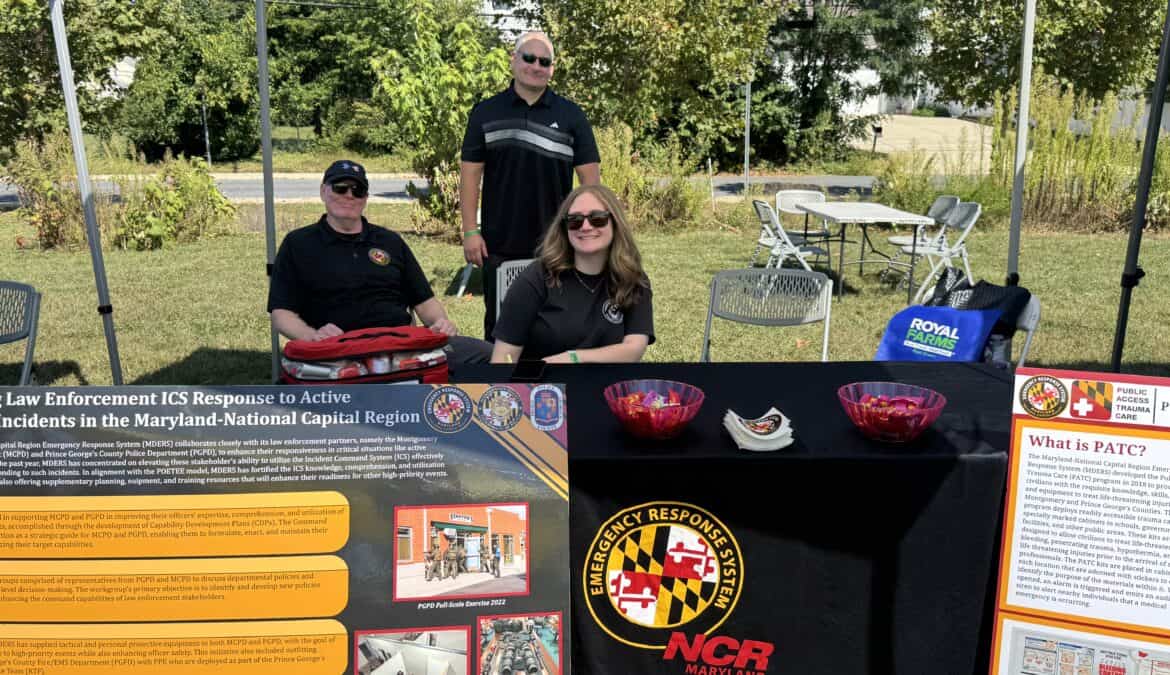


 On the day of the incident, Montgomery County was experiencing a series of strong thunderstorms that necessitated multiple responses from Swift Water Rescue units across Montgomery County to calls such as vehicles stuck in floodwaters. As a result, MCFRS units were already on the road and ready for deployment, further contributing to the successful outcome of this incident. Upon arriving on the scene, first responders quickly deployed resources to rescue the stranded child as well as stabilize the vehicle from moving and potentially jeopardizing the rescue effort. The tactics deployed during this response effort were trained upon during the course. The opportunities presented to the MCFRS Swift Water team during the Rescue from Vehicles in Floodwater Course allowed for realistic scenario-based training, which contributed to the successful outcome of this incident.
On the day of the incident, Montgomery County was experiencing a series of strong thunderstorms that necessitated multiple responses from Swift Water Rescue units across Montgomery County to calls such as vehicles stuck in floodwaters. As a result, MCFRS units were already on the road and ready for deployment, further contributing to the successful outcome of this incident. Upon arriving on the scene, first responders quickly deployed resources to rescue the stranded child as well as stabilize the vehicle from moving and potentially jeopardizing the rescue effort. The tactics deployed during this response effort were trained upon during the course. The opportunities presented to the MCFRS Swift Water team during the Rescue from Vehicles in Floodwater Course allowed for realistic scenario-based training, which contributed to the successful outcome of this incident.